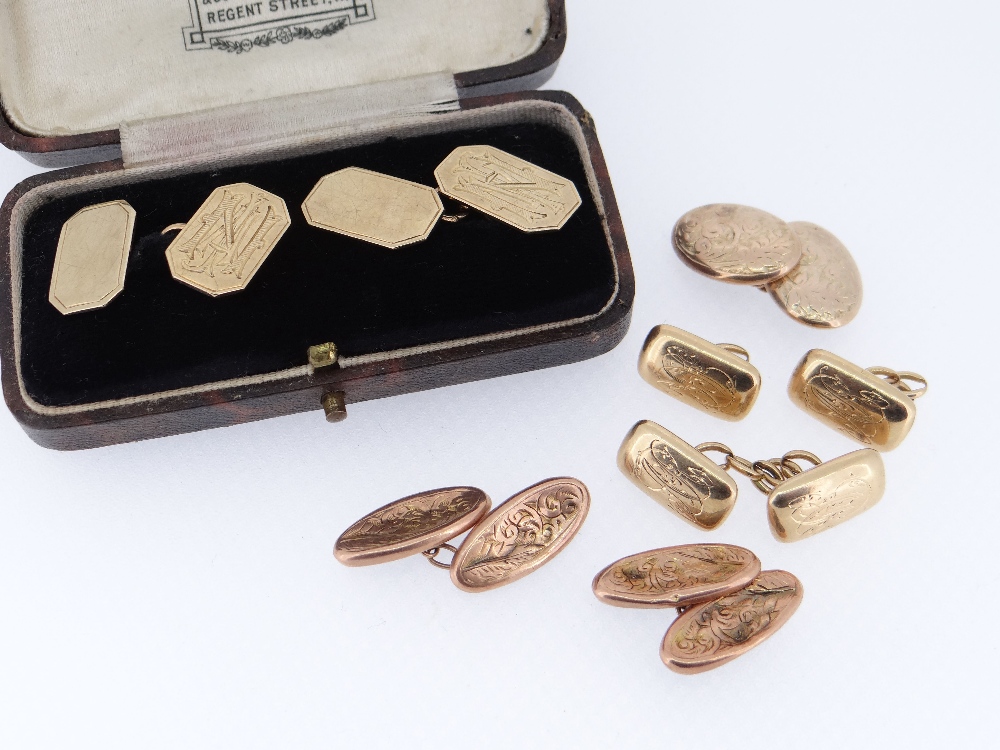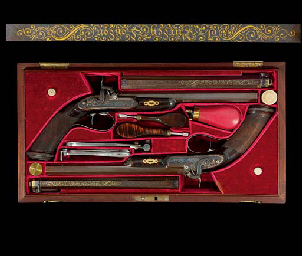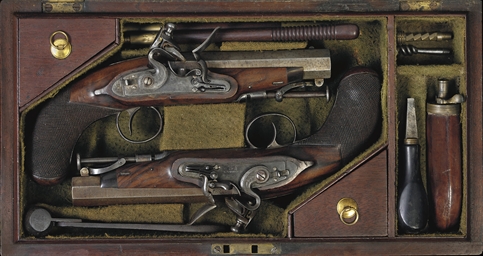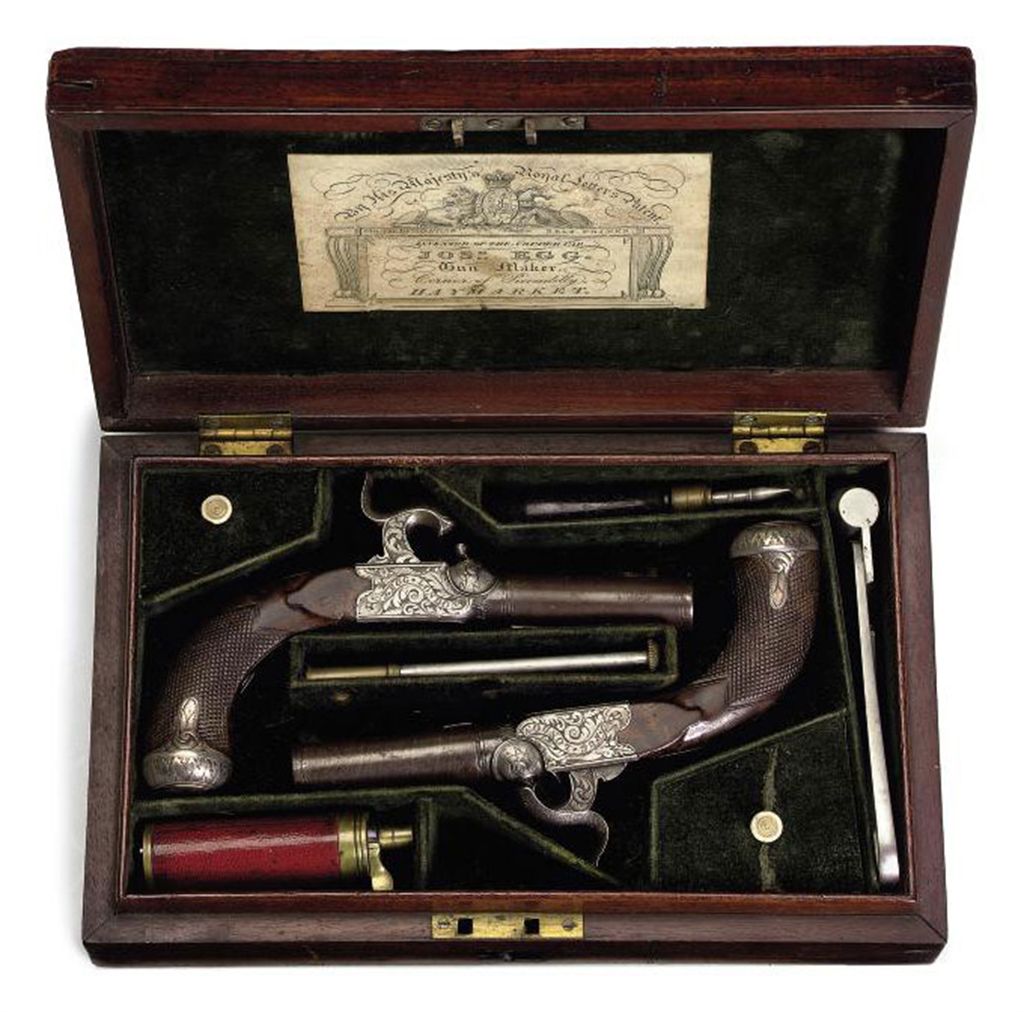.31 caliber. 3.5" barrels. SN: 11961 & 11298. Both items manufactured circa 1867. Blued finish, engraved, smooth ivory grips. Tops of barrels roll marked in two lines, "ADDRESS COL COLT / NEW-YORK U.S.A." Cylinders roll engraved with the classic Colt "stagecoach hold up" scene and are marked "COLT'S PATENT/ (serial number)". 5-shot, single action percussion revolvers that are engraved over roughly 75% of their surfaces. The engraving appears to be Colt factory work and is very likey that of master Colt engraver Carl A. "Cuno" Helfricht. Helfricht was born in 1851 and emigrated to the US in 1860 from Thuringia (Germany) with his parents and three sisters. Helfricht’s father eventually found work in the “Stocking Department” of the Colt Patent Firearms Company and sometime between late 1869 and early 1870 Cuno was working there as well under his father’s supervision. Cuno showed an interest and aptitude for engraving and was accepted to the famous Berlin Medal & Die Cutting Institute to study the techniques. Helfricht traveled to Germany in the summer of 1870 for his training and returned to the US in the fall of the following year. Almost immediately he was back working at Colt, this time as an engraver. His skills were quite good and by August of 1875 he was the head engraver for the company. Helfricht’s work is distinctive on Colt firearms in that he combined multiple engraving styles and techniques on single guns. He would employ Arabesque foliate scrolls with punch-dot backgrounds and at the same time use geometric lines, starbursts, figural panels and a variety of boarders that ran from intertwined lines to egg and dart patterns. The combination of diverse styles on the same firearm can give the guns a somewhat schizophrenic appearance, but the quality of Helfricht’s work more than overcame any dichotomy of style. These revolvers are engraved in Helfricht’s typical frenetic style. The frames behind the recoil shields are cut with his flowing Arabesque foliate scrolls with punch-dot background shading. The recoil shields are cut with a star motif foliate pattern and the lower and upper edges of the frame are cut with a variety of boarders, including simple flowing feathery patterns, intertwined lines and egg and dark marks. The rear of the barrels are cut with an open basket-weave pattern that is interspersed with dots and the upper rear of the gripstraps are cut with Cuno’s somewhat trademark geometric starburst motif. Although the rear of the frame is executed with some relatively complicated work, the balance of the gun is engraved in what is best called an “economical” style that make the coverage appear greater than it is, while minimizing the amount of time and work that went into the work. The revolvers are also mounted with a pair of period smooth ivory grips. It is unclear if these are factory grips or were added by a retailer. Both grips show wonderful age and have clearly been with the guns for a very long time. The grip on gun #11961, has the name "Feliciano Poza" written in a bold period hand in in on the interior in the grip strap cut out. While no person of that name appears in the US Census records, a handful of men with that name were alive in Mexico during a period when the guns might have been in use. The most likely candidate is found in the records of Mexican Masonic history. Brother Feliciano Poza was elected the Junior Grand Expert of the Grand Lodge of the Federal District of Mexico on 15 June 1883. To be a Master Mason elevated to such an esteemed position suggests that this particular Feliciano Poza was not only a worthy brother but likely a successful and prosperous businessman and a respected member of his community. Further research in Mexican archives could prove fruitful. The revolvers are contained in a 19th century compartmentalized English oak casing. The casing was relined in maroon velvet, likely during the first half of the 20th century. The casing includes a variety of accessories and a
.31 caliber. 3.5" barrels. SN: 11961 & 11298. Both items manufactured circa 1867. Blued finish, engraved, smooth ivory grips. Tops of barrels roll marked in two lines, "ADDRESS COL COLT / NEW-YORK U.S.A." Cylinders roll engraved with the classic Colt "stagecoach hold up" scene and are marked "COLT'S PATENT/ (serial number)". 5-shot, single action percussion revolvers that are engraved over roughly 75% of their surfaces. The engraving appears to be Colt factory work and is very likey that of master Colt engraver Carl A. "Cuno" Helfricht. Helfricht was born in 1851 and emigrated to the US in 1860 from Thuringia (Germany) with his parents and three sisters. Helfricht’s father eventually found work in the “Stocking Department” of the Colt Patent Firearms Company and sometime between late 1869 and early 1870 Cuno was working there as well under his father’s supervision. Cuno showed an interest and aptitude for engraving and was accepted to the famous Berlin Medal & Die Cutting Institute to study the techniques. Helfricht traveled to Germany in the summer of 1870 for his training and returned to the US in the fall of the following year. Almost immediately he was back working at Colt, this time as an engraver. His skills were quite good and by August of 1875 he was the head engraver for the company. Helfricht’s work is distinctive on Colt firearms in that he combined multiple engraving styles and techniques on single guns. He would employ Arabesque foliate scrolls with punch-dot backgrounds and at the same time use geometric lines, starbursts, figural panels and a variety of boarders that ran from intertwined lines to egg and dart patterns. The combination of diverse styles on the same firearm can give the guns a somewhat schizophrenic appearance, but the quality of Helfricht’s work more than overcame any dichotomy of style. These revolvers are engraved in Helfricht’s typical frenetic style. The frames behind the recoil shields are cut with his flowing Arabesque foliate scrolls with punch-dot background shading. The recoil shields are cut with a star motif foliate pattern and the lower and upper edges of the frame are cut with a variety of boarders, including simple flowing feathery patterns, intertwined lines and egg and dark marks. The rear of the barrels are cut with an open basket-weave pattern that is interspersed with dots and the upper rear of the gripstraps are cut with Cuno’s somewhat trademark geometric starburst motif. Although the rear of the frame is executed with some relatively complicated work, the balance of the gun is engraved in what is best called an “economical” style that make the coverage appear greater than it is, while minimizing the amount of time and work that went into the work. The revolvers are also mounted with a pair of period smooth ivory grips. It is unclear if these are factory grips or were added by a retailer. Both grips show wonderful age and have clearly been with the guns for a very long time. The grip on gun #11961, has the name "Feliciano Poza" written in a bold period hand in in on the interior in the grip strap cut out. While no person of that name appears in the US Census records, a handful of men with that name were alive in Mexico during a period when the guns might have been in use. The most likely candidate is found in the records of Mexican Masonic history. Brother Feliciano Poza was elected the Junior Grand Expert of the Grand Lodge of the Federal District of Mexico on 15 June 1883. To be a Master Mason elevated to such an esteemed position suggests that this particular Feliciano Poza was not only a worthy brother but likely a successful and prosperous businessman and a respected member of his community. Further research in Mexican archives could prove fruitful. The revolvers are contained in a 19th century compartmentalized English oak casing. The casing was relined in maroon velvet, likely during the first half of the 20th century. The casing includes a variety of accessories and a















Testen Sie LotSearch und seine Premium-Features 7 Tage - ohne Kosten!
Lassen Sie sich automatisch über neue Objekte in kommenden Auktionen benachrichtigen.
Suchauftrag anlegen